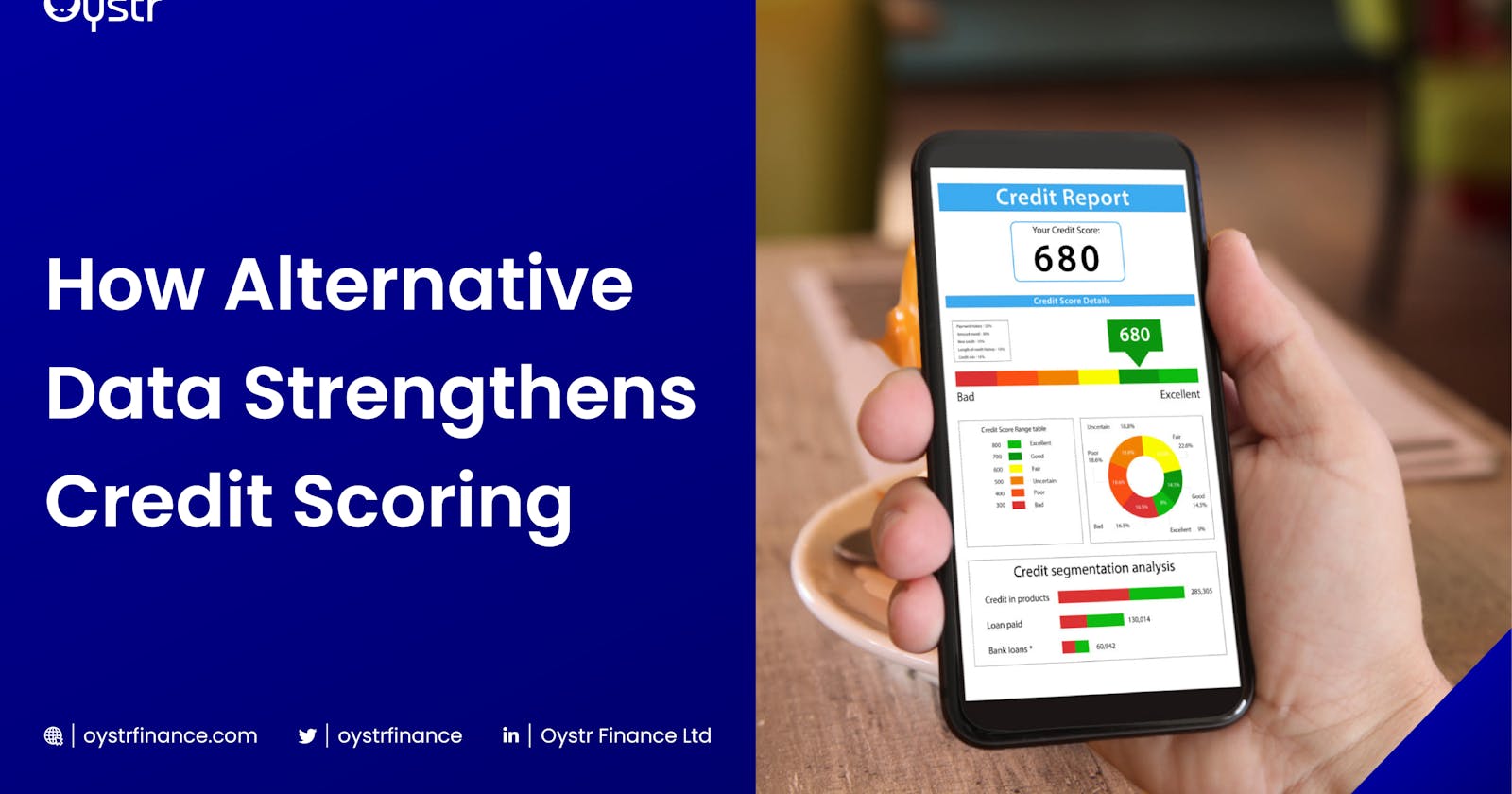When individuals and businesses need credit, they turn to banks and other lending service providers. However, a bunch of processing and decision-making occur between application and approval. One of such essential in-between processes includes credit risk assessment.
Lending services predispose financial institutions to several risks; as a result, they pay great attention to weighing their decisions and predicting outcomes. Accordingly, data is an important tool in the industry.
With credit scoring, lenders measure a borrower's creditworthiness and assess the risk involved in providing loans. Then, they analyze multiple files and data to understand and predict customer behaviour to avoid outcomes like repayment defaults.
Ideally, they assign scores from information interpreted from credit history and other traditional data sources. However, using them for credit scoring has been found insufficient for today's lending service delivery. Thus, the idea of strengthening the process with alternative data emerged.

Alternative Data and Credit Scoring
Conventional data sources such as bank files and credit history provide limited insight into the true financial behaviour of consumers. Moreover, several customers cannot provide the data lending institutions require to assign them credit scores.
Consequently, the accuracy, fairness and inclusiveness of credit scores become questionable. Several consumers remain invisible and unavoidable while their information becomes inadequate. Hence, lenders face the challenge of data scarcity, especially in populations with millions of underserved and unbanked individuals and businesses.
Contrarily, alternative datasets accumulated from multiple unconventional sources give fresh, comprehensive, and unique insights into consumer risk. Following the innovation of credit scoring big data models, opportunities spring up for lending services providers to step up.
Smart lenders recognize the potential of alternatives in expanding access to credit, even for the unbanked, especially through enhanced credit scoring. Alternative credit data, such as telecommunication data, and sentiment/reputation data, helps lending institutions more comprehensively capture customers' credit behaviour and probable risk and interpret them into credit scores. More so, it doesn't require that the customers have a credit history.
As a result, alternative credit scoring is rapidly becoming a thing in the lending world. Experts are digging for even more possibilities, and lenders embrace it as a powerful tool for efficient credit scoring.

How Does Alternative Data Strengthen Credit Scoring?
The rapid adoption of alternative credit data by multiple smart lenders increasingly proves its effectiveness. The following includes ways through which it enhances credit scoring:
Strengthening the Underwriting Process
The rich and unique data sets that make up alternative credit data significantly enhance the underwriting process for more accurate credit scores.
Insights from utility bill payments, telecom data, transactions, shopping behaviour, etc. inform and aids the underwriting, risk modelling and monitoring processes. Well-informed and accurate credit underwriting facilitates accurate credit reporting and scoring.
Detecting Fraud and Accurate Customer Profiling
One of the risks associated with providing lending services included fraud. Alternative scoring models help detect fraudulent data or personal information in borrowers' applications.
Using alternative data sources such as social media and digital IDs for customer profiling in credit scoring enables lenders to screen out malicious applicants early. In addition, alternative credit scoring models provide lenders greater insights into the overall profile of customers.
Automating the Credit Assessment Process
Alternative data employs machine learning and artificial intelligence to interpret unique insights from unconventional sources. Hence, it supports the automation of credit processing and approval operations.
Some alternative credit scoring models automate the entire process of assessing creditworthiness, from ingesting new data to analysis, modelling insights, and designating scores. As a result, credit application processing time significantly reduces and improves customer experience.
Eliminating Human Bias
Alternative data, in combination with fintech advancements such as algorithm models, help lenders avoid prejudiced interpretations, discrimination and unfair scores. It eliminates human biases based on demographics or age from influencing decision-making. Due to the lack of human sentiment and sociological grounds, it delivers objective results which lead to fair decisions.
Providing Real-Time Data
With traditional credit data and scoring processes, previous or outdated data influence credit scores. In addition, traditional data rarely provides insight into the recent events or situations of an applicant.
For instance, poor credit history can affect a customer's creditworthiness for up to three years (even if they exhibit creditworthy behaviour afterwards). Likewise, a previously good credit history sometimes offers no predictive indications of the customer's current situation and behaviour.
With alternative data, lenders use real-time data to give credit scores and make informed decisions based on up-to-date information. Its data provides time-relevant insights into the borrower's present creditworthiness. Additionally, alternative credit scoring gives room for continuous updating of risk models.
Providing Information on Credit Invisible
It gives underserved individuals and businesses (who are marginalized from the formal credit system) a new wave of opportunities. The unbanked and underbanked have thin files and no formal credit records, with scarce relevant information to inform credit reporting.
However, with alternative data, underserved applicants possess an avenue to strengthen their case for better credit scores and approval chances. Their utility bill payments, rent payments, telecom data, etc., form up alternative credit data sources, which may increase their chances of getting creditable scores.
Enriching Credit Data With Unique Perspectives
Using alternative data to inform credit scoring models provide unique perspectives on lenders' decision-making. The richness and assortment of the datasets give an all-around view of a customer's behaviour. The unique insights could give higher scores to those deemed credit-unworthy by traditional data. It also reveals risks hidden from traditional data-informed credit scoring.

Benefits of Using Alternative Data Scoring
Using alternative data scoring, you can access a variety of benefits to your customers, mitigate risk, and new customers. Some of the benefits of alternative credit scoring include:
Lenders can provide smart, customized, optimized services and products.
It helps the financially excluded to enter the formal credit system.
With alternative credit scoring, lenders expand credit to the underserved while avoiding risk.
It increases the efficiency of the entire credit processing and risk management process.
Conclusion
Alternative data enhances the process and results of credit scoring by providing unique insights. It offers merits such as increased scoring accuracy, shorter processing time, better customer experience, and enhanced credit risk management. Alternative credit scoring generally transforms lending and the finance industry.
Oystr Finance is a grand alternative data provider in the finance industry. We offer alternative credit scoring, among other alternative data for financial institutions, BNPL companies, and more in Africa. Visit our website to discover more.

